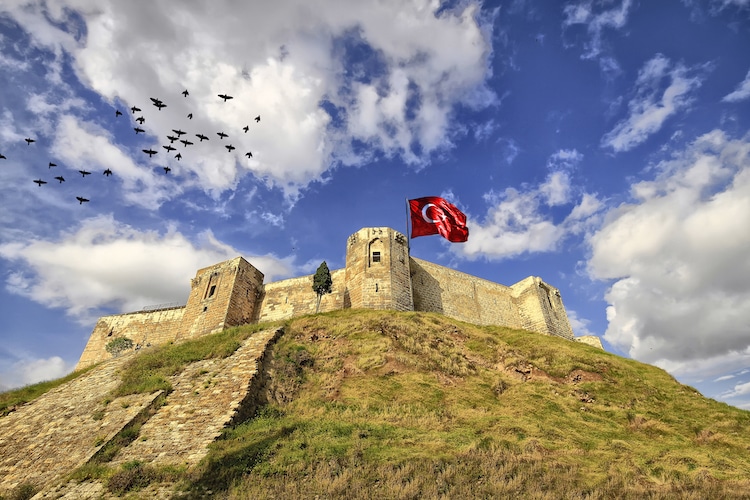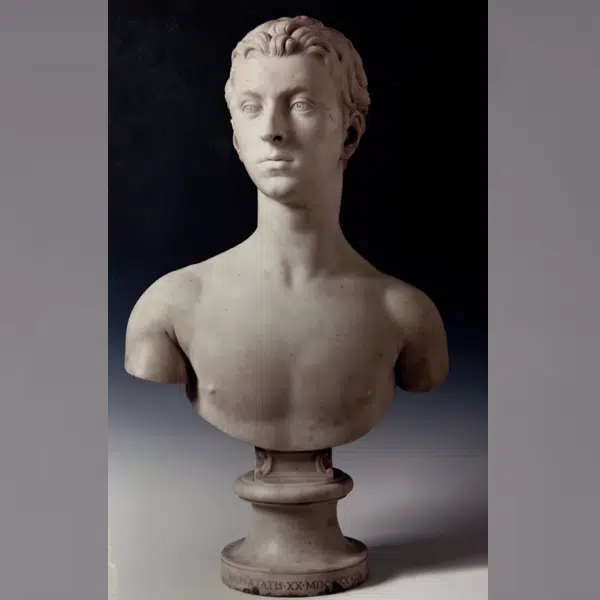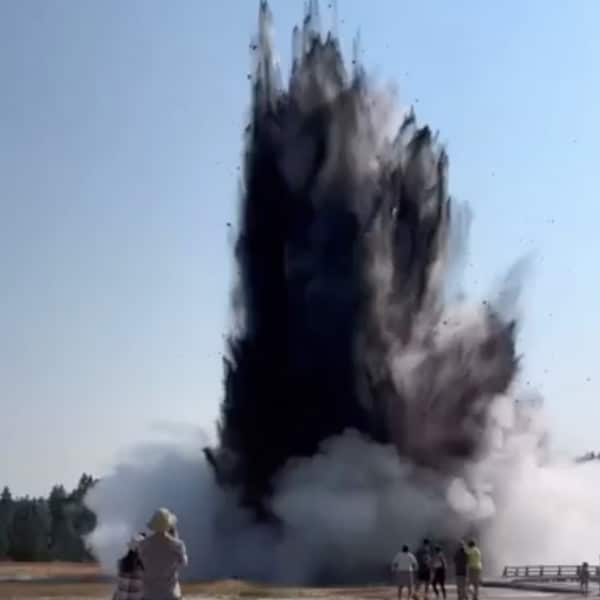
Gaziantep Castle prior to the Kahramanmaras earthquake. (Photo: Muhur/Depositphotos)
When a powerful earthquake struck central Turkey and northwest Syria on Monday, February 6, it caused mass devastation. With a magnitude of 7.8, it was the most powerful earthquake to hit the area in at least a century. The tremors, which latest for hours afterward, could be felt as far away as Greece and Lebanon. Over 5,000 people perished during the natural disaster, and a staggering 5,775 buildings collapsed.
One of the hardest-hit cities was Gaziantep. Located 50 miles from the epicenter of the Kahramanmaraş earthquake, this Turkish city was left devastated. Among the buildings that collapsed was the 2,000-year-old Gaziantep Castle. This historic castle was built in the second and third centuries CE during the Roman Empire.
The Turkish state-run news agency Anadolu reported that “some of the bastions in the east, south and southeast parts of the historical Gaziantep Castle in the central Şahinbey district were destroyed by the earthquake, the debris was scattered on the road.”
They continued to state that some of the castle's iron railings were scattered on the sidewalks and that large cracks appeared in the bastions. Between the initial earthquake and following tremors—one of which hit a 7.5 magnitude—there is great concern for the cultural heritage of the area. Photographs from Gaziantep show the crumbling castle, which was a popular tourist destination that hosted the Gaziantep Defence and Heroism Panoramic Museum.
The castle, which was expanded during the Ottoman Empire, was not the only cultural site damaged by this natural disaster. The Şirvani Mosque, located close by, was also affected. This 17th-century mosque saw its eastern wall and dome collapse due to the earthquake.
Meanwhile, in Syria, the historic city of Aleppo was also damaged in the earthquake. The country's antiquities office confirmed that the city's ancient citadel was impacted. Sections of an Ottoman mill inside the citadel have collapsed, and sections of defensive walls have crumbled and cracked. In addition, the entrance to the citadel was damaged, and a dome on one of the minarets of the Ayyubid Mosque—located inside the fort—collapsed.
As rescue efforts, which have been hampered by inclement weather, continue, the World Health Organization has warned that the death toll could soar. In 1999, a 7.4-magnitude earthquake near Istanbul killed 17,000 people and there are real concerns that this earthquake could have a similar result. Turkey is located on the Anatolian fault line, making it one of the most at-risk areas for active earthquakes. Millions live in the area, which has also seen an increase in Syrians fleeing their country's civil war.
If you are interested in helping those affected by the Kahramanmaraş earthquake, there are several organizations working to help victims. This includes the International Blue Crescent Relief and Development Foundation, Molham (a student-run group in Syria), UNICEF, and Global Giving.
After a major earthquake on the border of Turkey and Syria, the 2,000-year-old Gaziantep Castle was destroyed.
Gaziantep Castle is completely destroyed after today's earthquake in Turkey.
The castle was built by the Hittite Empire and later built into a main castle by the Roman Empire in 2nd and 3rd centuries AD. pic.twitter.com/6Amv0PfhNT
— Oskar Aanmoen 🇳🇴 (@OAanmoen) February 6, 2023
The Syrian government has also reported that the medieval Citadel of Aleppo was also damaged by the 7.8-magnitude earthquake.
General Directorate of Antiquities and Museums: #Aleppo_Citadel suffered minor and medium damage, including the fall of parts of the Ottoman mill, parts of the northeastern defensive walls cracked and fell. pic.twitter.com/47kzqrJ66V
— Ibrahim Muhammad (@IbrahimDSY1) February 6, 2023
Nearly 6,000 buildings collapsed, and it's expected that the death toll will soar as rescue efforts continue.
🔴 BREAKİNG NEWS
IT WAS ANNOUNCED THAT A TOTAL OF 5606 BUILDINGS HAVE BEEN DESTROYED DUE TO THE EARTHQUAKE IN TURKEY.
images from Malatya. Don't worry I'm fine, it's snowing heavily#Turkey #deprem #Earthquake #Kahramanmaras #malatyapic.twitter.com/yiuAbuTy5q— Eren ☭🇹🇷 (@Eren50855570) February 6, 2023
Emergency funds have been set up by many charities to help the victims of this natural disaster.
View this post on Instagram
View this post on Instagram
h/t: [The Guardian]
Related Articles:
WWII Refugees Send Heartwarming Letters of Hope to Syrian Children
Long-Dormant Icelandic Volcano Erupts After 6,000 Years of Inactivity
Shocking Video Shows Landslide in Norway Carrying 8 Homes Into the Sea
Humanitarian Chef Is on the Ground Providing Ukrainian Refugees With a Warm Meal






















































































